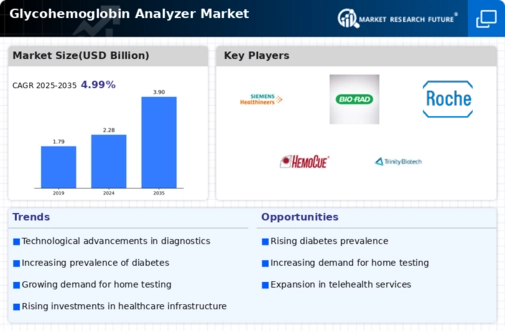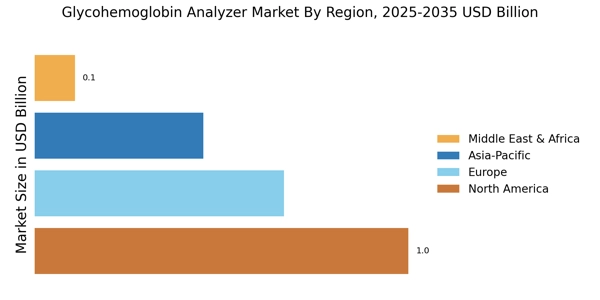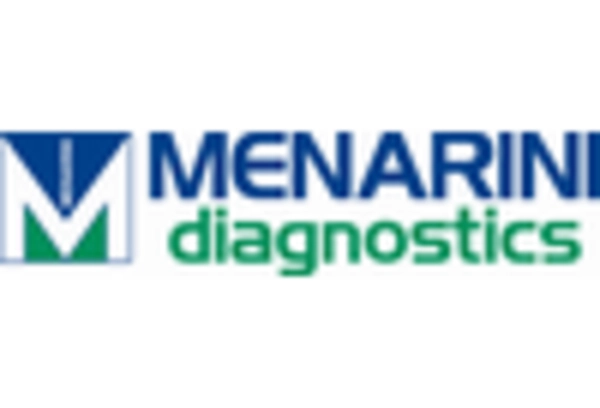Rising Prevalence of Diabetes
The increasing incidence of diabetes worldwide is a primary driver for the Glycohemoglobin Analyzer Market. According to recent statistics, the number of individuals diagnosed with diabetes has surged, with estimates suggesting that over 500 million people are currently living with the condition. This rise necessitates effective monitoring and management solutions, thereby propelling the demand for glycohemoglobin analyzers. These devices are crucial for assessing long-term glucose control, which is vital for diabetes management. As healthcare providers emphasize the importance of regular monitoring, the Glycohemoglobin Analyzer Market is likely to experience substantial growth, driven by the need for accurate and reliable testing methods.
Growing Awareness of Diabetes Management
There is a notable increase in awareness regarding diabetes management among patients and healthcare professionals, which is positively impacting the Glycohemoglobin Analyzer Market. Educational initiatives and campaigns aimed at promoting understanding of diabetes and its complications have led to a greater emphasis on regular monitoring of glycohemoglobin levels. This heightened awareness encourages patients to seek out testing options, thereby driving demand for glycohemoglobin analyzers. As more individuals recognize the importance of maintaining optimal blood sugar levels, the Glycohemoglobin Analyzer Market is poised for growth, reflecting the changing attitudes towards diabetes care.
Increased Focus on Preventive Healthcare
The Glycohemoglobin Analyzer Industry. As healthcare systems prioritize early detection and management of chronic diseases, the demand for reliable monitoring tools has surged. Glycohemoglobin analyzers play a pivotal role in this paradigm by enabling healthcare providers to identify patients at risk of diabetes and other related conditions. This proactive approach not only improves patient care but also reduces long-term healthcare costs. Consequently, the Glycohemoglobin Analyzer Market is likely to benefit from this trend, as more healthcare facilities invest in preventive diagnostic technologies.
Technological Innovations in Diagnostics
Technological advancements in diagnostic tools are significantly influencing the Glycohemoglobin Analyzer Market. Innovations such as point-of-care testing and the integration of artificial intelligence into analyzers enhance the accuracy and efficiency of glycohemoglobin testing. These developments not only improve patient outcomes but also streamline laboratory workflows. The market is witnessing a shift towards more user-friendly devices that provide rapid results, which is particularly appealing in clinical settings. As healthcare systems increasingly adopt these advanced technologies, the Glycohemoglobin Analyzer Market is expected to expand, reflecting the growing demand for sophisticated diagnostic solutions.
Regulatory Support for Advanced Diagnostics
Regulatory bodies are increasingly supporting the development and adoption of advanced diagnostic tools, which serves as a significant driver for the Glycohemoglobin Analyzer Market. Policies aimed at improving healthcare outcomes and ensuring patient safety encourage manufacturers to innovate and enhance their products. This regulatory environment fosters competition and drives technological advancements within the market. As new guidelines emerge, healthcare providers are more likely to adopt state-of-the-art glycohemoglobin analyzers that comply with these standards. Consequently, the Glycohemoglobin Analyzer Market is expected to thrive, benefiting from the supportive regulatory landscape.


















Leave a Comment